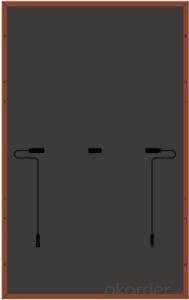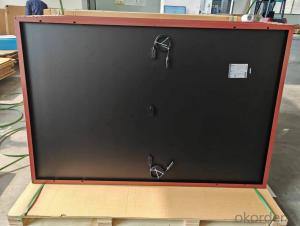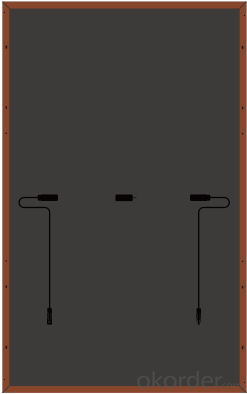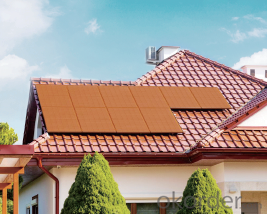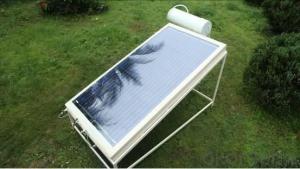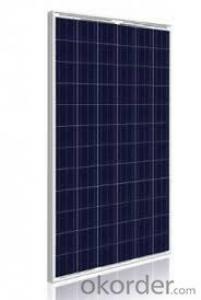CECOX 350w orange-colored mono solar panels used in the face of buildings
- Loading Port:
- Stock in Panama
- Payment Terms:
- TT or LC
- Min Order Qty:
- 36 pc
- Supply Capability:
- 100000 pc/month
- Option:
- 350
OKorder Service Pledge
OKorder Financial Service
You Might Also Like
Item specifice
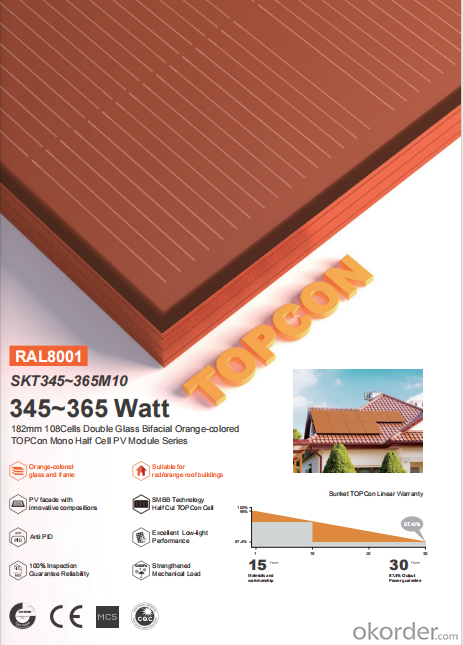

Company presentation
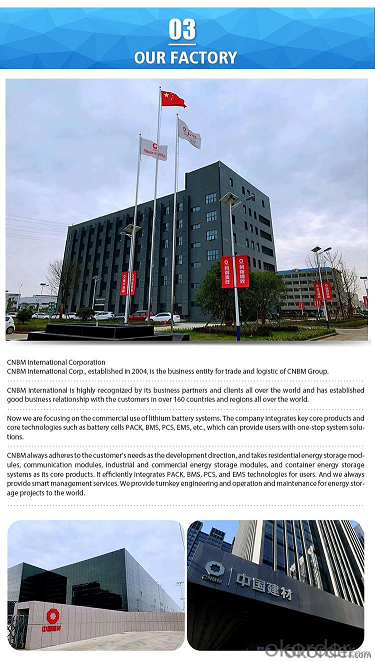

RFQ
Q: Do you have CE?
A: Yes, our products are approved by CE.
Q: Is OEM &ODM available in your factory ?
A: Yes, you just offer us necessary documents and then we will produce the products as your requirements.
Q: What is your Delivery time?
A: Usually, we make merchandise inventory. If we have the products in stock, the delivery time is 5-10 days after receiving the deposit; If we don’t have the products in stock, we will arrange the production right now.
The delivery time will be 10-30 days. It depends on the quantity of order.
Q:Why choose us?
A: 1. Ready To Ship 2. Sample Available 3. One-Stop Service 4. Online customization5. Many years' experiences of manufacturing and service available in 24hours
- Q:Can solar cells be used to power remote sensing devices?
- Yes, solar cells can be used to power remote sensing devices. Solar cells convert sunlight into electrical energy, which can be stored in batteries to power remote sensing devices in areas where grid power is not available. This makes solar cells an efficient and sustainable solution for powering remote sensing devices.
- Q:Can solar cells be used in transportation?
- Yes, solar cells can be used in transportation. Solar-powered vehicles and boats have been developed, and solar cells can be used to power various components in electric vehicles such as charging stations, auxiliary systems, and even directly powering the vehicle itself. However, the efficiency and cost of solar cells still pose challenges for widespread adoption in transportation.
- Q:Can solar cells be used for powering electric vehicle charging stations?
- Yes, solar cells can be used for powering electric vehicle charging stations. Solar panels can convert sunlight into electricity, which can then be used to charge electric vehicles. This renewable energy source is ideal for charging stations as it reduces reliance on traditional power grids and reduces carbon emissions.
- Q:Can solar cells be used in concert venues?
- Yes, solar cells can be used in concert venues. They can be installed on the rooftops or surrounding areas of the venue to convert sunlight into electricity. This renewable energy source can help power the venue's lighting, sound systems, and other electrical equipment, reducing dependence on traditional energy sources and lowering carbon emissions. Additionally, solar cells can be integrated into portable or temporary structures for outdoor concerts, providing clean energy during events.
- Q:What is the impact of solar cell installations on job creation?
- Solar cell installations have a significant positive impact on job creation. By promoting the growth of the renewable energy sector, these installations create a wide range of job opportunities across various fields such as manufacturing, installation, maintenance, and research. The demand for skilled workers in solar-related industries has been steadily increasing, leading to job creation and economic growth. Additionally, the solar industry often provides employment opportunities at both the local and national levels, contributing to the overall development of the workforce and the economy.
- Q:Can solar cells be used to charge electric vehicles?
- Yes, solar cells can be used to charge electric vehicles. Solar panels can convert sunlight into electricity, which can then be used to charge the batteries of electric vehicles. This allows for sustainable and renewable energy sources to power electric vehicles, reducing reliance on fossil fuels and decreasing carbon emissions.
- Q:Can solar cells be used for powering communication systems?
- Yes, solar cells can be used for powering communication systems. Solar cells are capable of converting sunlight into electricity, which can be utilized to power various devices and systems, including communication systems. This makes solar cells a sustainable and environmentally friendly option for powering communication networks, especially in remote or off-grid areas where access to traditional power sources may be limited.
- Q:Are solar cells affected by temperature changes?
- Yes, solar cells are affected by temperature changes. Higher temperatures can cause a decrease in the efficiency of solar cells, as the increase in temperature can lead to an increase in resistance within the cells, resulting in reduced power output. Conversely, lower temperatures can improve the performance of solar cells, increasing their efficiency.
- Q:What materials are used to make solar cells?
- Solar cells are typically made using materials such as silicon, cadmium telluride, or copper indium gallium selenide (CIGS).
- Q:Can solar cells be combined with energy storage systems?
- Yes, solar cells can be combined with energy storage systems. This combination allows for the capture and storage of excess solar energy generated during periods of high sunlight, which can then be used during times when solar energy is not available. Energy storage systems help address the intermittent nature of solar power, ensuring a continuous and reliable energy supply.
1. Manufacturer Overview |
|
|---|---|
| Location | |
| Year Established | |
| Annual Output Value | |
| Main Markets | |
| Company Certifications | |
2. Manufacturer Certificates |
|
|---|---|
| a) Certification Name | |
| Range | |
| Reference | |
| Validity Period | |
3. Manufacturer Capability |
|
|---|---|
| a)Trade Capacity | |
| Nearest Port | |
| Export Percentage | |
| No.of Employees in Trade Department | |
| Language Spoken: | |
| b)Factory Information | |
| Factory Size: | |
| No. of Production Lines | |
| Contract Manufacturing | |
| Product Price Range | |
Send your message to us
CECOX 350w orange-colored mono solar panels used in the face of buildings
- Loading Port:
- Stock in Panama
- Payment Terms:
- TT or LC
- Min Order Qty:
- 36 pc
- Supply Capability:
- 100000 pc/month
- Option:
- 350
OKorder Service Pledge
OKorder Financial Service
Similar products
New products
Hot products
Hot Searches

